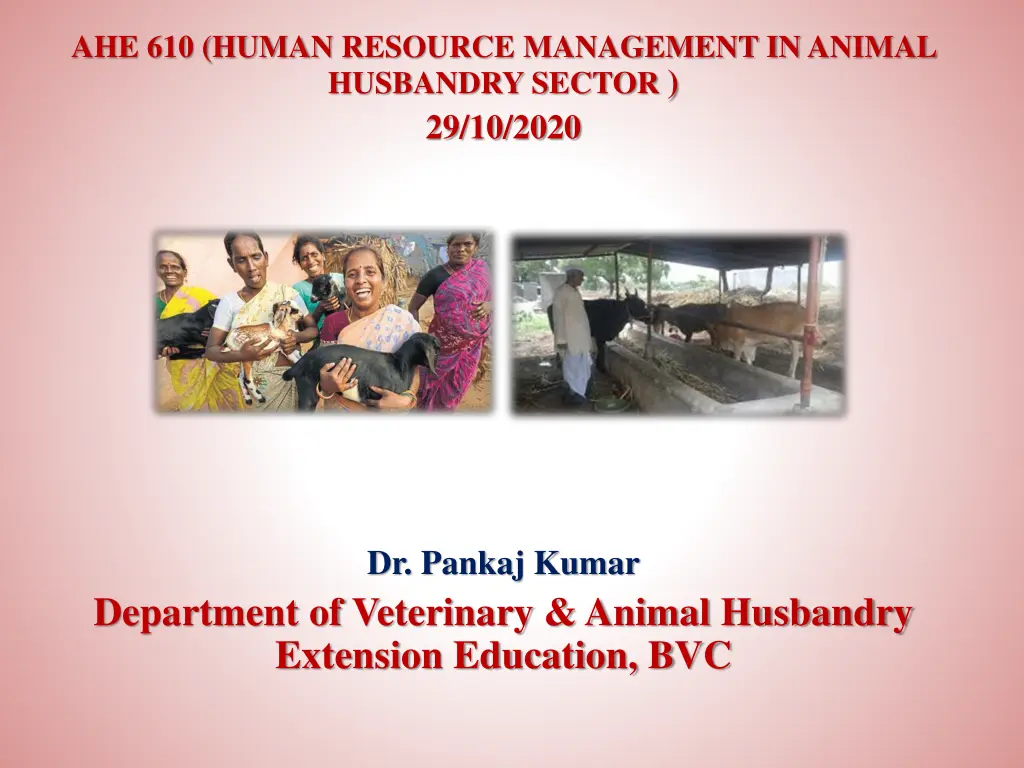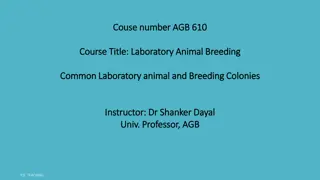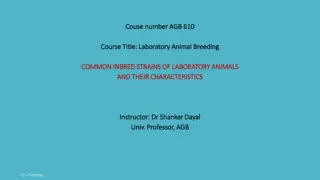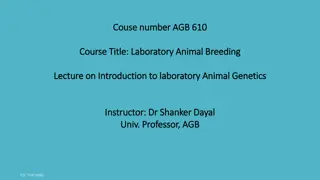
Management Process: Essentials and Functions in Animal Husbandry Sector
Understand the management process in the animal husbandry sector, including definitions, components, and key functions like planning, organizing, directing, and controlling. Explore how management processes are crucial for achieving organizational goals and utilizing resources effectively through cooperative human efforts.
Download Presentation

Please find below an Image/Link to download the presentation.
The content on the website is provided AS IS for your information and personal use only. It may not be sold, licensed, or shared on other websites without obtaining consent from the author. If you encounter any issues during the download, it is possible that the publisher has removed the file from their server.
You are allowed to download the files provided on this website for personal or commercial use, subject to the condition that they are used lawfully. All files are the property of their respective owners.
The content on the website is provided AS IS for your information and personal use only. It may not be sold, licensed, or shared on other websites without obtaining consent from the author.
E N D
Presentation Transcript
AHE 610 (HUMAN RESOURCE MANAGEMENT IN ANIMAL HUSBANDRY SECTOR ) 29/10/2020 Dr. Pankaj Kumar Department of Veterinary & Animal Husbandry Extension Education, BVC
Some regard management process as getting things done throughpeople; Some consider it as the process of reaching organizational goals by working with and through people.
Management process is defined as the process, composed of interrelated social and technical functions and activities (including roles), occurring in a formal organizational setting for the purpose of accomplishing predetermined objectives through the utilization of humanandother resources. 3
According to D. E. McFarland, "Management process is the distinct process by which the managers create, direct, maintain and operate purposive organisation through systematic, co-coordinated and cooperative human efforts . According to Gemp R. Terry, "Management process is a distinct process consisting of planning, organising, actuating and controlling, performed to determine and accomplish objectives by the use of people and other resources".
Elements/Components of Management Process The essential elements/components of Management Process are four which are actually basic functions of management: Planning Organising Directingand Controlling. We may add some more elements in the management process asfollows: Motivating Co-coordinating Staffing and Communicating.
Luther Gullic gave a new formula to suggest the elements of Management Process i.e. basic functions of management. According to him, management process may be indicated by the word"PODSCORB . Here, P' states for 'planning'. "O" for 'organising', "D" for 'directing', "S" for 'Staffing', "CO" for 'Coordinating, "R"for 'Reporting' and "B"for 'Budgeting'. Gullic coined the word "PODSCORB" to suggest seven functions of management.
Planning Planning isthe primary function of management. It involves determination of a course of action to achieve desired results/objectives. Planning is the starting point of management process and all other functions of management arerelated to and dependent on planningfunction. Planning isthe key to success,stability and prosperity in business. Itacts asatool for solving the problems of abusiness unit. It helps to visualize the future problems and keeps management ready with possiblesolutions.
Organising Organising means bringing the resources (men, materials, machines, etc.) together and usethem properly for achieving theobjectives. Organisation isaprocessaswell asit isastructure. Organising means arranging ways and means for the execution of a business plan. It provides suitable administrative structure and facilitates execution of proposedplan. Organising involves departmentalisation, establishing span of control, delegation of authority, establishment of superior-subordinate relationship and provisionof mechanism for co-ordination of various business activities.
Staffing Staffing refersto provisionof manpower for theexecution of abusiness plan. Staffing involves recruitment, selection, appraisal, remuneration and development ofpersonnel. The need of staffing arises in the initial period and also from time to time for replacement and also along with the expansion and diversification of business activities. Every business unit needs efficient, stable and cooperative staff for the management of businessactivities. Manpoweristhe most important assetof abusinessunit.
Directing (Leading) Directing deals with guiding and instructing people to do the work in the right manner. Directing isthe responsibility of managers at alllevels. They haveto workasleaders of theirsubordinates. Clear plans and sound organisation set the stage but it requires a manager to direct and lead hismen for achieving theobjectives. Itinvolves raisingthe morale of subordinates. Italso involves communicating, leading andmotivating. Leadership is essential on the part of managers for achieving organisational objectives.
Coordinating Effective coordination and also integration of activities of different departments areessential for orderly working of an Organisation. A managermust coordinate the workforwhich he isaccountable. Coordination isessential at all levels ofmanagement. It gives one clear-cut direction to the activities of individuals and departments. It also avoids misdirection and wastages and brings unity of action in the Organisation.
Controlling Controlling involves three broadaspects: (a) establishing standards ofperformance, (b) measuringworkin progressand interpreting results achieved, and (c) taking corrective actions, ifrequired. Managers have to exercise effective control in order to bring success to a businessplan. Controlling isacontinuous activity of asupervisory nature.
Motivating Motivating is the process through which a manager motivates his men to give their best to theOrganisation. It means to encourage people to take more interest and initiative in the work assigned. Organisations prosper when the employees are motivated through special efforts including provisionof facilities and incentives. Motivation is actually inspiring and encouraging people to work more and contribute more to achieve organisationalobjectives. Itisapsychological process of greatsignificance.
Communicating Communication is necessary for the exchange of facts, opinions, ideas and information between individualand departments. In an organisation, communication is useful for giving information,guidance and instructions. Managers should be good communicators. They have to use major portion of their time on communication in order to direct, motivate and co-ordinate activities of their subordinates. People think and act collectively throughcommunication. According to Louis Allen, "Communication involves a systematic and continuing process of telling, listening and understanding".






